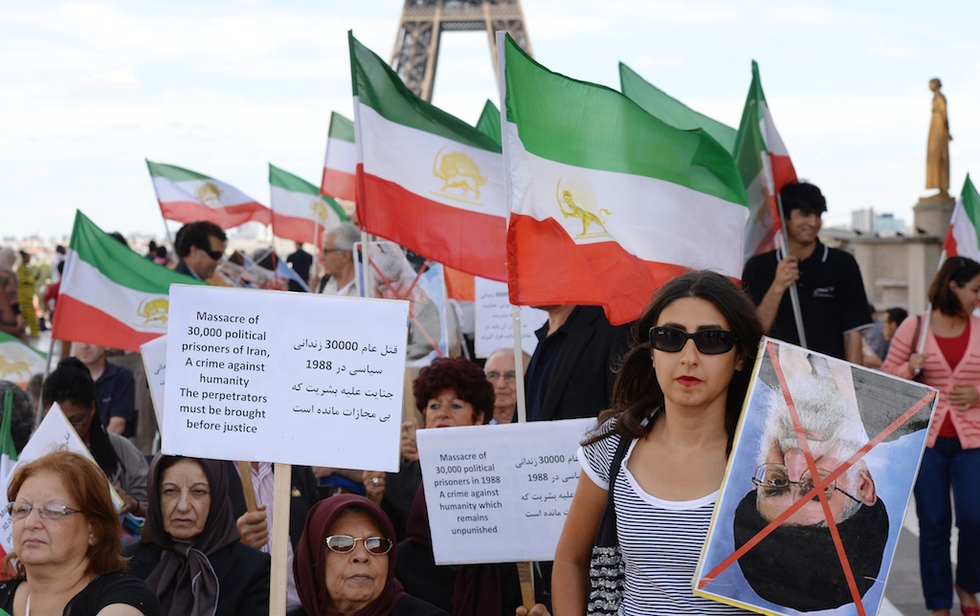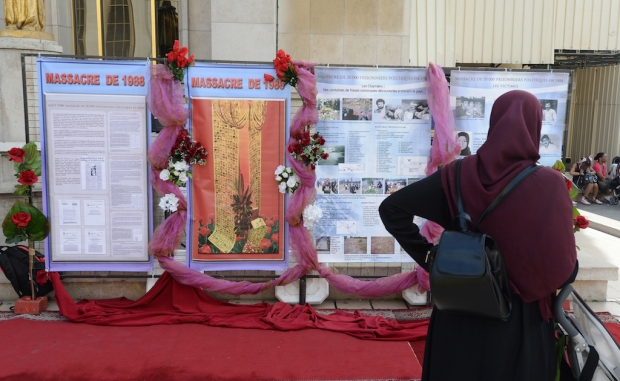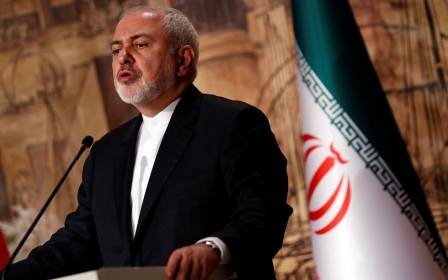Iran's 'biggest crime': Amnesty calls for UN inquiry into 1988 mass executions

It is three decades since thousands of political prisoners were executed at the end of the Iran-Iraq war, in what one Iranian politician has called the Islamic Republic's "biggest crime".
Now Amnesty International has called on the UN to launch an independent investigation into the killings, as a new report by the human rights group accuses the Islamic Republic of crimes against humanity for concealing facts over the executions.
In the report released on Tuesday, Amnesty warns that the Iranian government has continued to deny information to relatives of more than 5,000 people who were reportedly executed over a period of weeks at the tail end of the Iran-Iraq war.
Those who have inquired about the executions - which were largely extra-judicial and carried out in secret - have faced "harassment, intimidation, arbitrary arrest and detention, as well as torture and other ill-treatment," according to Amnesty.
Several of those involved in carrying out the killings continue to hold senior positions in Iran today, including Alireza Avaei, Iran’s current justice minister, and Hossein Ali Nayyeri, who is currently head of the Supreme Disciplinary Court for Judges.
Meanwhile, the mass graves of those executed have been desecrated and destroyed, while the government has continued to play down the extent of the killings, the report said.
“These blood-soaked secrets from Iran’s past continue to haunt the country to the present day," said Philip Luther, research and advocacy director for the Middle East and North Africa at Amnesty.
"This report unravels the web of denials and distortions that the Iranian authorities have perpetuated over 30 years, both at home and internationally, to hide the truth that they forcibly disappeared and systematically killed thousands of political dissidents within a matter of weeks between late July and early September 1988."
With no prospects of justice for victims inside Iran, it is even more crucial that the UN establishes an independent, impartial and effective international mechanism to help bring those responsible for these abhorrent crimes to justice
- Philip Luther, Amnesty International
“The fact that to this day the Iranian authorities refuse to acknowledge the mass killings, tell relatives when, how and why their loved ones were killed and identify and return their bodies, means that the enforced disappearances are continuing today. This has inflicted torturous suffering on victims’ families.
"Until Iran’s authorities come clean and publicly reveal the fate and whereabouts of the victims, these crimes against humanity are ongoing.”
The large majority of those executed were supporters of the Mujahideen e-Khalq (MEK), an Islamic-leftist group dedicated to overthrowing the Islamic Republic. Others belonged to leftist and Kurdish organisations, including the communist Tudeh Party and the Democratic Party of Iranian Kurdistan (PKDI).
The MEK have long claimed that the death toll from the 1988 killings was much higher, with 30,000 executed. The group sided with Iraqi President Saddam Hussein during the Iran-Iraq War and launched an unsuccessful military incursion into Iran from Iraqi territory shortly before the executions were ordered.
The group's support for Iraq during the war has left MEK deeply unpopular across Iran, while they have been accused of being a "cult" due to their secretive and autocratic practices. They currently operate out of a base in Albania following their expulsion from Iraq.
UN inaction
An audio recording leaked to media in 2016 of an August 1988 meeting featuring key officials from the Tehran “death commission” discussing the killings sparked off new debate about their legacy.
In the recording, Hossein Ali Montazeri - a former loyalist turned government critic - can be heard condemning the 1988 executions as “the biggest crime in the history of the Islamic Republic” and accuses those gathered, including prosecutors, a judge and an intelligence official, of having misled then Supreme Leader Ruhollah Khomenei over the executions.
The audio was taken down shortly after being released, but it led to new calls for an independent investigation into the events of the time.
Amnesty on Tuesday criticised the lack of condemnation from the UN Commission of Human Rights at the time and the failure of the UN General Assembly to refer the situation to the Security Council.
It shows why and how the Islamic Republic is in power - by killing thousands of dissidents
- Shadi Sadr, Justice For Iran
"The abject failure of the UN and international community to pursue truth and justice for the atrocities committed by Iranian authorities has had catastrophic consequences not only on survivors and victims’ families but also on the rule of law and respect for human rights in the country. Iran’s authorities must no longer be allowed to shield themselves from accountability for their crimes against humanity,” said Luther.
“With no prospects of justice for victims inside Iran, it is even more crucial that the UN establishes an independent, impartial and effective international mechanism to help bring those responsible for these abhorrent crimes to justice.”
Many of the victims of the executions were buried in mass graves, which - since the 2016 recording was released - have had their sites systematically destroyed by the Iranian government in an attempt to stop them being shrines or memorial sites for families, according to Justice For Iran (JFI), a human rights organisation that worked with Amnesty on the latest report.
Raha Bahreini, Amnesty's researcher on Iran, told reporters at a launch in London that the government continued to deny the existence of the mass graves, although a few families had been directed to individual gravesites.
However, she added that "many families remain concerned that they have been deceived and these individual graves remain empty".
"In no cases we are aware of have the authorities returned the bodies of the victims to their families," she said.
Persecution of relatives
Amnesty International worked with NGOs, relatives of victims and opposition organisations to collect data for the report. Victim lists provided by the MEK and others were also compared against death lists released by the Iranian government.
Shadi Sadr, a human rights lawyer and co-founder of JFI, said that individuals within Iran had provided information to her organisation and Amnesty at great personal risk.
“Those who worked with us from inside the country took a lot of risks to sent videos or audio evidence or photos,” she told Middle East Eye.
“We have had cases of persecution of the families who worked with us and other organisations such as Amnesty in collecting the data.”
However, those hopes began to fade after Rouhani in 2013 appointed Mostafa Pour-Mohammadi as justice minister. Pour-Mohammadi has been regarded as one of the “central figures” who oversaw the 1988 killing.
She said the Islamic Republic was still highly sensitive to the 1988 massacre because it exposed the bloody roots of the system, as Khomenei’s forces cracked down on political organisations who had previously been allies in the 1979 revolution that overthrew the Shah.
“It shows why and how the Islamic Republic is in power - by killing thousands of dissidents.”
This article is available in French on Middle East Eye French edition.
New MEE newsletter: Jerusalem Dispatch
Sign up to get the latest insights and analysis on Israel-Palestine, alongside Turkey Unpacked and other MEE newsletters
Middle East Eye delivers independent and unrivalled coverage and analysis of the Middle East, North Africa and beyond. To learn more about republishing this content and the associated fees, please fill out this form. More about MEE can be found here.





